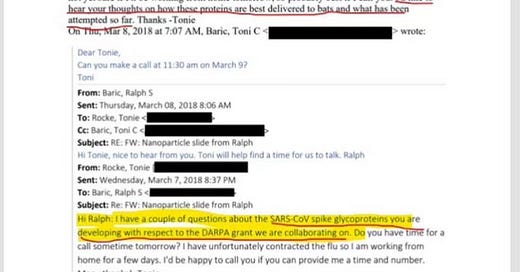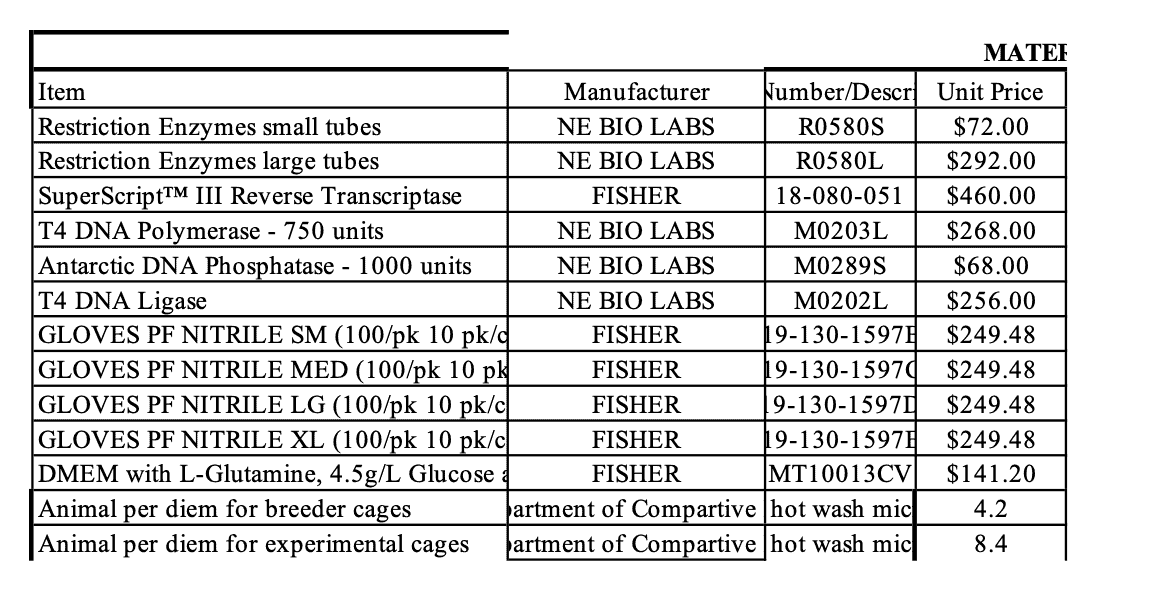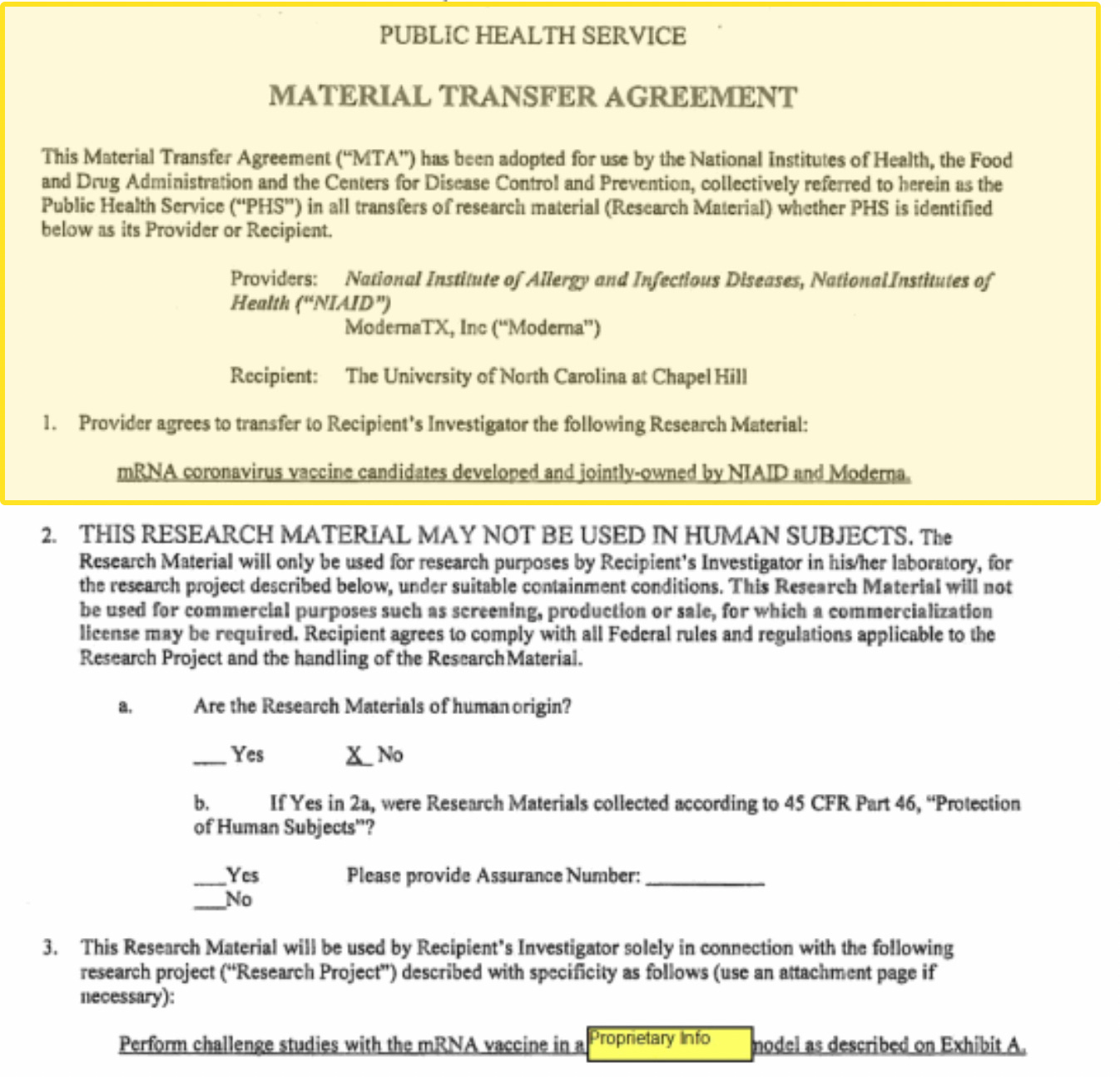Why Aren't Daszak and Baric Arrested?
The mountain of evidence that Peter Daszak and Ralph Baric created SARS-CoV-2
The recent news that Dr. Peter Daszak has been “invited” to a May 1 House of Representatives hearing to question him about his 2018 work on SARS coronaviruses prompted me to review the following email thread dated March 5 - 8, 2018 between Daszak at EcoHealth Alliance, Tonie Rocke at the United States Geological Survey to UNC Professor Ralph Baric.
Especially interesting is Ms. Rocke’s statement: “Hi Ralph: I have a couple of questions about the SARS-CoV spike glycoproteins you are developing with respect to the DARPA grant we are collaborating on.”
Here it is critically important to understand that DARPA chose to pass on Daszak’s DEFUSE grant proposal—which proposed modifying SARS-CoV bat coronaviruses in order to make them infectious to humans—because, in the DARPA reviewer’s estimate, the work proposed was too dangerous.
And yet, as Ms. Rocke plainly states, Professor Baric was already “developing SARS-CoV spike glycoproteins with respect to the DARPA grant.”
This is just one of many glaringly obvious pieces of evidence that Baric, Daszak, and Dr. Shi Zhengli at the Wuhan Institute of Virology were already, in 2018, developing SARS-CoV-2—the infectious agent that began circulating in Wuhan, China less than two years later.
The 2018 DEFUSE proposal also expressly states the plan to insert a furin cleavage site into the "SARS-CoV spike glycoprotein” that Professor Baric was “developing” in 2018.
As I wrote in an earlier post, the U.S. Right to Know reporter, Emily Kopp, wrote an excellent report titled US scientists proposed to make viruses with unique features of SARS-CoV-2 in Wuhan and published on January 18, 2024. As Ms. Kopp points out, SARS-CoV-2 has multiple features that are expressly proposed in the DEFUSE grant proposal.
An early draft of the DEFUSE proposal — obtained by FOIA release to US Right to Know in Dec. 2023—states the following:
We will identify the best consensus candidate and synthesize the genome using commercial vendors (e.g., BioBasic, etc.), as six contiguous cDNA pieces linked by unique restriction endonuclease sites that do not disturb the coding sequence, but allow for full length genome assembly,” the grant states.
This was PRECISELY the feature of SAR-CoV-2 that Valentin Bruttel et al. found so suspicious in their 2022 paper titled Endonuclease fingerprint indicates a synthetic origin of SARS-CoV-2. As they summarize for the lay reader:
Lay Summary To construct synthetic variants of natural coronaviruses in the lab, researchers often use a method called in vitro genome assembly. This method utilizes special enzymes called restriction enzymes to generate DNA building blocks that then can be “stitched” together in the correct order of the viral genome. To make a virus in the lab, researchers usually engineer the viral genome to add and remove stitching sites, called restriction sites. The ways researchers modify these sites can serve as fingerprints of in vitro genome assembly.
On a darkly comical note, the authors of the 2022 paper describe their materials for analyzing the SARS-CoV-2 restriction sites:
The R package DECIPHER (Wright, n.d.) was used to analyze restriction maps. DECIPHER comes with a set of 214 restriction enzymes for sale at New England Biolabs (referred to as NEB restriction enzymes).
Compare this 2022 analysis of SARS-CoV-2 with the DEFUSE grant proposal of 2018, which includes the following budget table submitted by USGS researcher Tonie Rocke (who exchanged the March 5, 2018 e-mail with Ralph Baric).
In other words, Baric et al. proposed to use the exact same materials and methods in their viral engineering work in 2018 that was used to analyze SARS-CoV-2, which began circulating in Wuhan less than two years later.
For various reasons, I suspect that Baric et al. had already engineered SARS-CoV-2—or had already made a great deal of progress in doing so—before 2018. The DEFUSE grant was merely a mechanism for hauling a ton of dough out of DARPA for work they had already done—that it, the grant proposal was merely a money grab.
As I have discussed in my two previous posts titled The French Connection and the the Great SARS-CoV-2 Charade Chapter II—Moderna CEO, Stephane Bancel, patented the genetic sequence for the SARS-CoV-2 cleavage site in 2016—four years before the virus began circulating in Wuhan.
A conspicuous feature of the development timeline for Moderna’s mRNA-1273 vaccine is a MATERIAL TRANSFER AGREEMENT (see pages 105-107) from NIAID/Moderna (“Provider”) to Ralph Baric (“Research Recipient”). The Agreement specifies the transfer of “mRNA coronavirus vaccine candidates developed and jointly owned by NIAID and Moderna” to Dr. Baric “to perform challenge studies with the mRNA vaccine.”
The Agreement is signed by Ralph Baric on December 12, 2019—19 days before the Wuhan Municipal Health Commission informed the WHO China Country Office of “cases of pneumonia of unknown etiology detected in Wuhan City, Hubei Province of China on December 31, 2019, and 24 days before the genome of SARS-CoV-2 was published on February 5, 2020.
Why did NIAID and Moderna believe that Dr. Baric was equipped to challenge their “mRNA coronavirus vaccine candidates”? The Material Transfer Agreement clearly indicates their belief that Dr. Baric (the world’s foremost researcher on SARS-CoV coronaviruses) already had in his lab the materials to challenge their mRNA vaccine.
AUTHOR’S NOTE: A HUGE amount of time, effort, and research goes into our reporting and analysis. If you find it interesting and informative, please consider becoming a paid subscriber to Courageous Discourse. For just $5 per month, you can really help to support our efforts to expose the wretched hive of scum and villainy that has afflicted untold suffering and damage on humankind for the last four years.









When you work for the CIA you do not get arrested. You are either useful, or you commit suicide under very suspicious circumstances.
This is why, in honor of his great accomplishment, COVID-19 needs to be renamed “Ralph Baric’s Disease (or RBD).